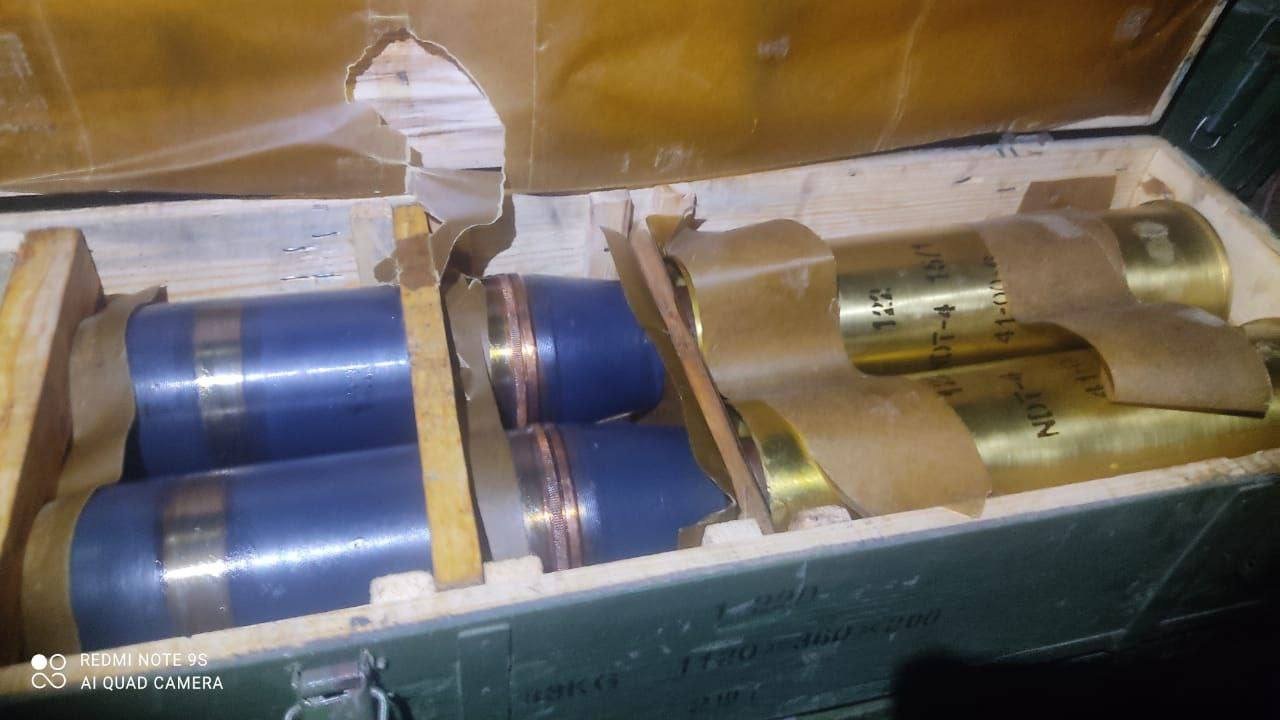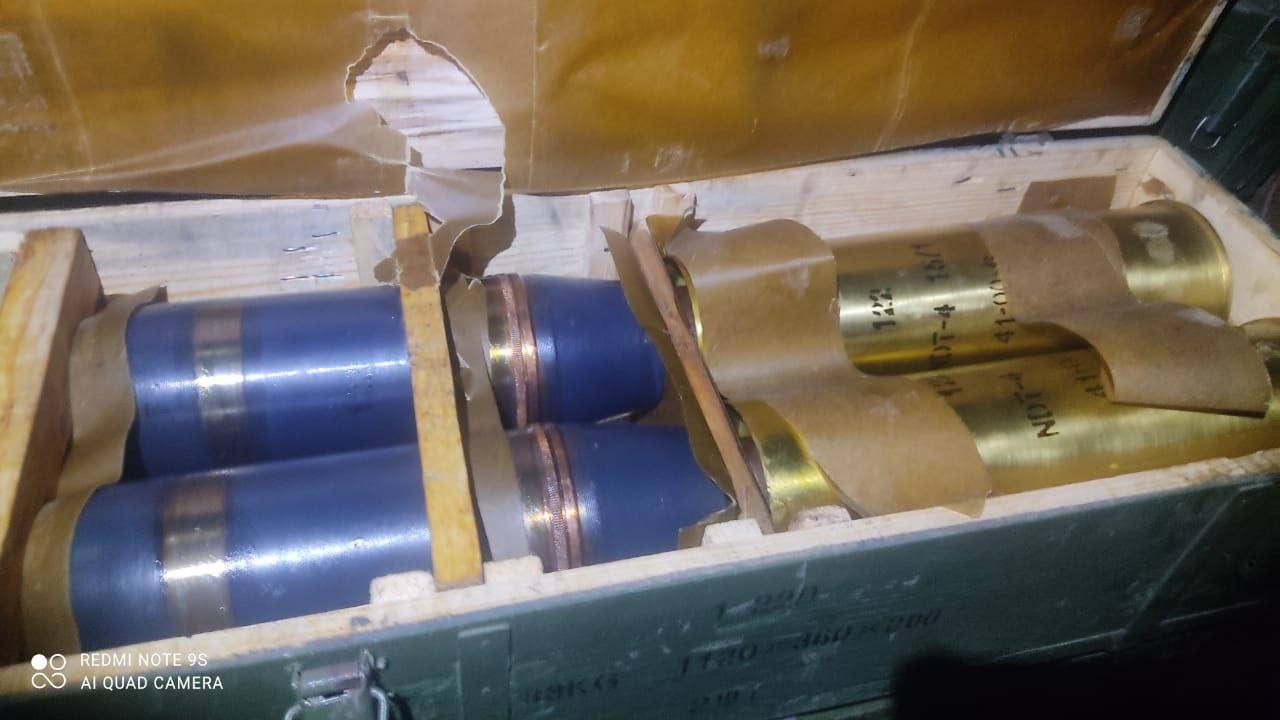
On September 13, 2023, a North Korean delegation, led by Kim Jong Un, arrived in the Russian Federation. The program of negotiations was really intense, and at the end of the visit, the Supreme Leader of North Korea was taken to the city of Komsomolsk-on-Amur to visit the KnAAZ aviation plant and see Su-35S and Su-57 fighters.

Simultaneously, various foreign media began to write about the final stage of concluding a major defense agreement between Russia and North Korea.
But according to the report of Kyrylo Budanov, Chief of the Defence Intelligence of Ukraine, as of September 13, it had been six weeks since North Korea had been supplying Russia with ammunition of 122mm and 152mm caliber for gun artillery, as well as 122mm rockets for multiple rocket launchers.
Such information was confirmed soon: on October 20, OSINT analysts from the Ukraine Weapons Tracker project published the first photos of 122mm and 152mm projectiles for gun artillery. The photos were taken by Russian servicemen.


The ammunition shown in the released footage looked relatively new and was manufactured in the 2000s. A specific marking, paint, and transport container reveals a product belonging to the country of manufacture.
Soon, on October 28, the Russian servicemen published the following post on their Telegram channel: “Neighbors units received such ammo. At the moment, they are clarifying the artillery range tables, etc.”
According to the marking, that was a 152mm high-explosive projectile manufactured in 2007 (41-07-6, where the numbers are stated in the following order: batch numbers, the year of manufacture, the manufacturer’s factory index). In the box, according to the standard, there was one set of projectiles with a powder charge in the case.
The 152mm shell, which the Russians pass under the “Izdelie 152” designation, is made for use with the D-20/ 2S3 Akatsiya artillery platforms. According to the authors of the photo, the projectile is thin-walled compared to its Soviet-era alternative.
Many participants in the discussion on the Russian servicemen Telegram channel stated they needed artillery range tables for this product. The Russians also actively asked for artillery range tables for North Korean 122mm high-explosive shells for gun artillery.
Vodohray editors managed to receive an “Artillery range tables” for the entire range of ammunition supplied by North Korea. Namely, to the 122mm and 152mm HE-Frag shells for gun artillery, 122mm rockets for MLRS, and 120mm mortar rounds.
According to these documents, range correction is necessary only for 120mm mortar rounds (“Izdelie 120-1”) using the Soviet artillery range table TS RG No. 98. At the same time, 122mm rockets use their own artillery range tables, titled “Artillery range tables delivered along the “I” line.” So, apparently, the assumption that these gun artillery shells are thin-walled is false, since the documents lack information about the necessary corrections.
Ammunition for gun artillery “Izdelie 122-1,” “Izdelie 152-1” uses standard artillery range tables for D-30 and D-20/ 2S3 Akatsiya, namely, in terms of TS RG No. 145, 271, 153. There are also two types of shells: 122mm – OF-462, 152mm – OF-540. The proof therefore demonstrates that North Korean shells are exact replicas of these two types of shells.
The Head of the Estonian Military Intelligence Centre, Ants Kiviselg, said that North Korea supplied up to 350,000 artillery shells to the Russian Federation.
It should be noted that there are various estimates concerning the number of shells received by the Russian Armed Forces. In particular, a South Korean MP who attended a closed briefing of the National Intelligence Service voiced the figure of 1 million North Korean shells delivered to Russia.
The calculation of Frontelligence Insight OSINT analysts shows that the lower bar of the number of delivered shells is 500,000, based on 2,000 shipped containers at the end of October 2023. The calculation was made for 122mm and 152mm HE-Frag projectiles with sets of RGM-2 fuses for them.
Here it is worth noting that the abovementioned Ants Kiviselg provided his information on the number of shells when only 1,000 containers were shipped. The researchers supposed different versions of the containers’ content:
You can read more about the study here: https://frontelligence.substack.com/p/counting-the-rounds-north-korean.
Summing up, we must say that the export of ammunition through gray/black supply schemes for North Korea is one of the ways to profit and bring scarce currency into the country. It is definitely not worth expecting that the case will end up with the current 2,000 containers.
Currently, they supply to the Russian Federation shells of the old design for the old Soviet artillery platforms, which, in fact, are in common in the Russian Armed Forces and have become even more popular because more modern and advanced artillery has been removed from storage to compensate for the large losses.
Підтримати нас можна через:
Приват: 5169 3351 0164 7408 PayPal - [email protected] Стати нашим патроном за лінком ⬇
Subscribe to our newsletter
or on ours Telegram
Thank you!!
You are subscribed to our newsletter